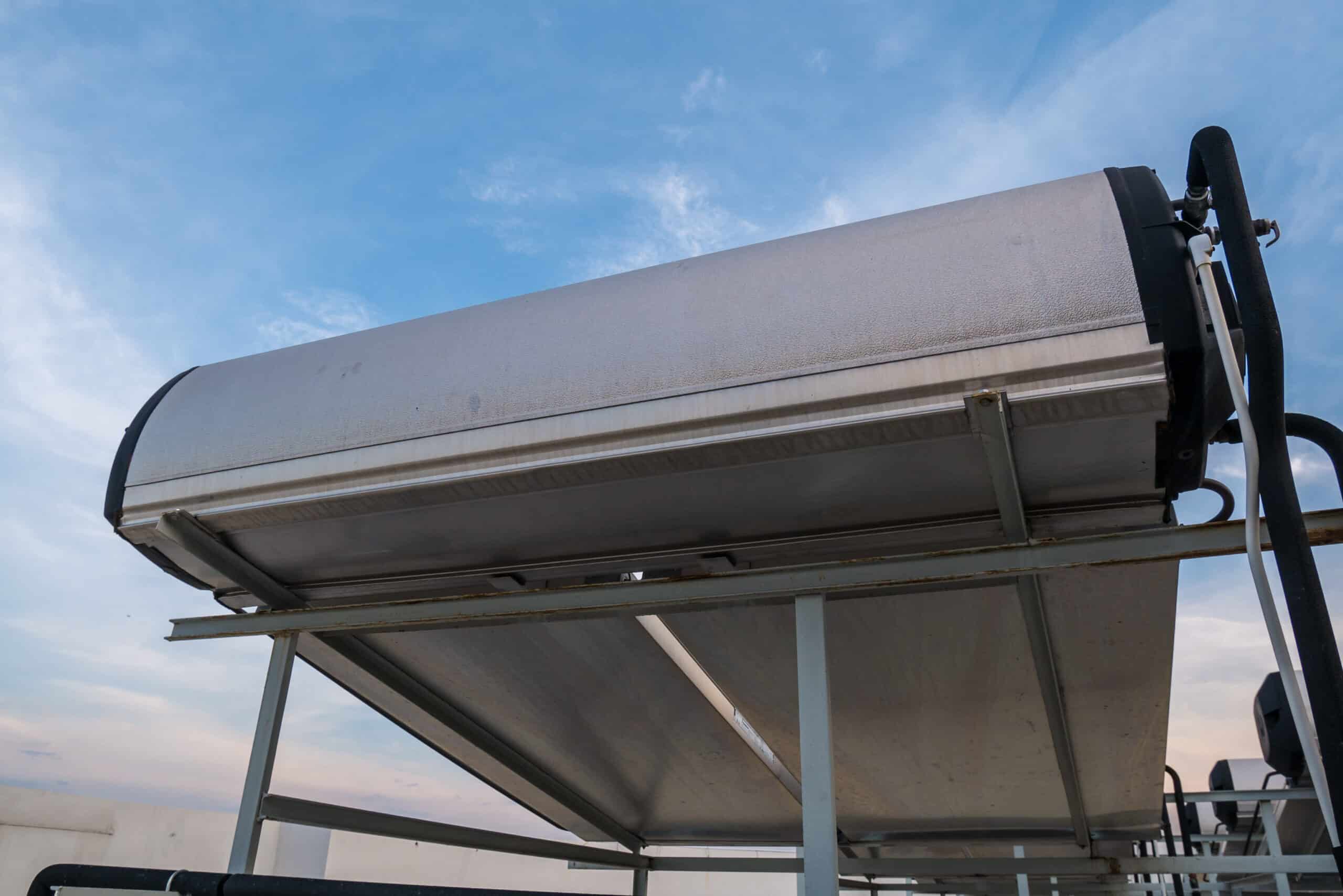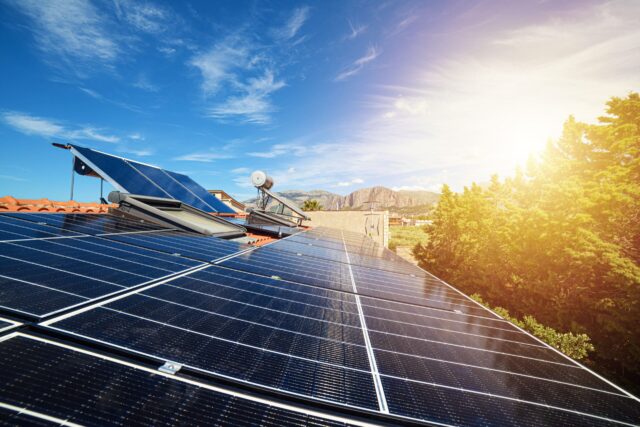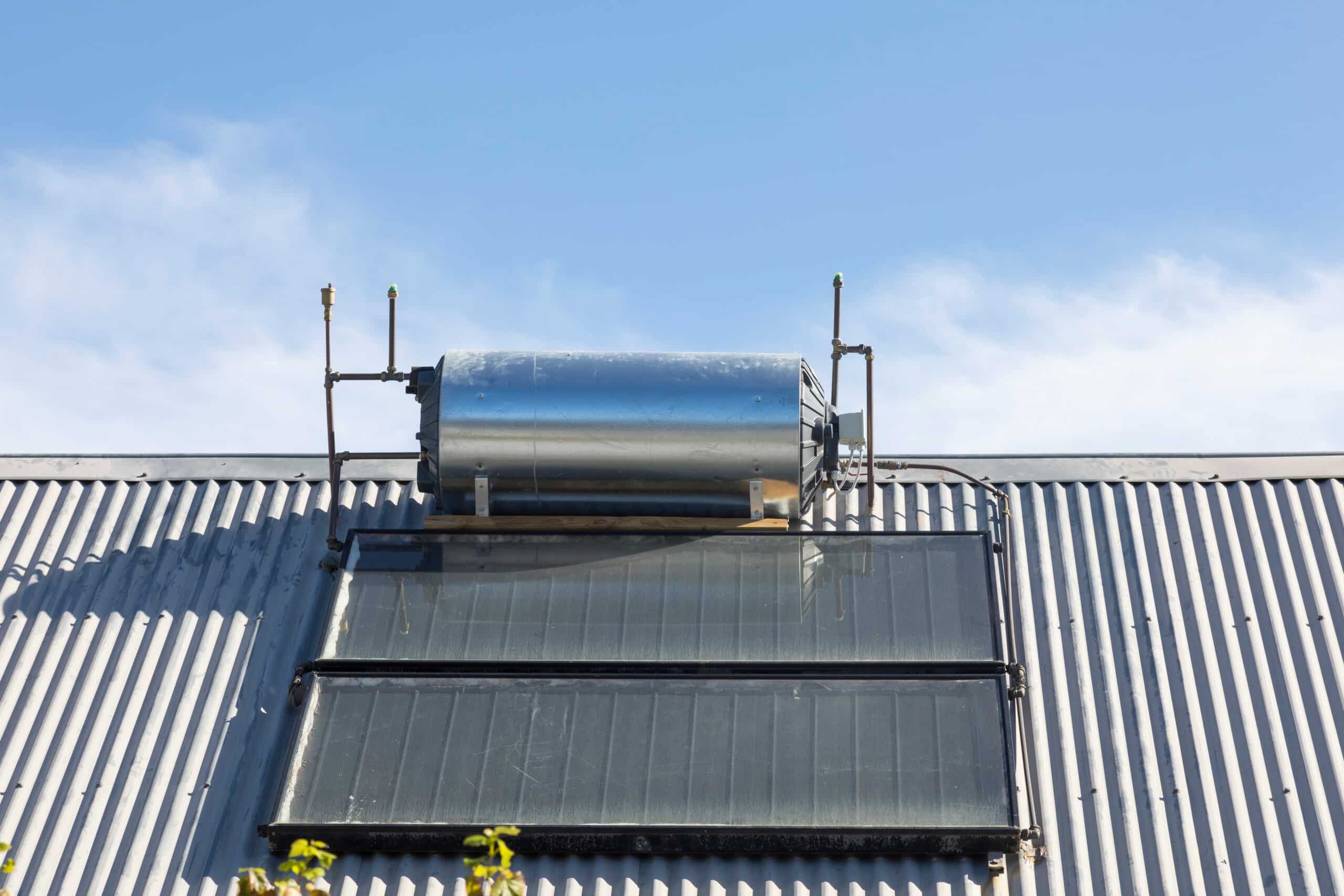Solar hot water systems are a brilliant way to harness the sun’s energy and slash your energy bills. These systems use solar panels to heat water, which is then stored for use in your home. Solar hot water can provide up to 90% of a household’s hot water needs, significantly reducing reliance on traditional energy sources.
We love how solar hot water systems work with nature to provide a renewable energy solution. The sun’s rays hit specially designed solar collectors, typically mounted on your roof. These collectors absorb the sun’s heat and transfer it to a fluid that circulates through pipes. This heated fluid then warms the water in your storage tank.
Solar hot water is a top choice for environmentally conscious homeowners in Perth. It’s a clean, green alternative that cuts carbon emissions and helps protect our beautiful planet. Plus, with plenty of sunshine in Western Australia, it’s a smart investment that keeps on giving year after year.
Basic Principles of Solar Hot Water Systems
Solar hot water systems use the sun’s energy to heat water for homes and businesses. These systems are efficient and can save money on energy bills.
Collecting Solar Energy
Solar collectors are the heart of a solar hot water system. They absorb sunlight and turn it into heat. There are two main types:
- Flat plate collectors: Large, flat boxes with a dark absorber plate inside
- Evacuated tube collectors: Rows of glass tubes with absorber fins
Both types have a special coating that helps them soak up more sunlight. The collectors are usually placed on roofs where they get the most sun. In Australia, we aim them north for the best results.
Solar Hot Water Conversion
Once the collectors gather heat, they warm up the water or a special fluid. This happens in a few steps:
- Sunlight hits the collector
- The collector turns sunlight into heat
- Water or fluid flows through pipes in the collector
- The fluid heats up as it moves
Some systems pump the fluid, while others use gravity. The hot fluid then travels to a storage tank. There, it heats the water we use in our homes.
Storing Heated Water
Storage tanks keep the hot water ready for use. They’re insulated to hold heat for long periods. Most tanks have:
- An inlet for cold water
- An outlet for hot water
- A backup heater for cloudy days
The size of the tank depends on how much hot water a household needs. Larger families often need bigger tanks. Some systems use two tanks: one for solar-heated water and another for backup heating.
In colder parts of Australia, we might add antifreeze to the system. This stops pipes from freezing in winter. The climate plays a big role in how we set up and use solar hot water systems.
Components of a Solar Hot Water System
A solar hot water system consists of several key parts working together to harness the sun’s energy and heat water for our homes. The following are the main components that make these hot water systems function efficiently.
Solar Collectors
Solar collectors are the heart of a solar hot water system. Providers often use two main types: flat-plate collectors and evacuated tube collectors.
Flat-plate collectors have a dark absorber plate inside an insulated box. This plate soaks up the sun’s heat and transfers it to water or antifreeze flowing through attached pipes.
Evacuated tube collectors use glass tubes with a vacuum inside. This design cuts heat loss, making them more efficient in cooler climates. The tubes absorb sunlight and heat the fluid inside.
Both types of collectors are usually mounted on roofs where they can catch the most sunlight throughout the day.
Hot Water Storage Tanks
Storage tanks keep the heated water ready for use. These tanks are well-insulated to maintain water temperature.
Most systems use a single tank, but some have two. In a two-tank setup, one tank preheats water using solar energy before sending it to a standard hot water tank.
The size of the tank depends on a home’s hot water needs. Bigger families often need larger tanks to ensure they don’t run out of hot water.
Some tanks have built-in heat exchangers. These allow the solar-heated fluid to warm the water without mixing.
Pumps and Controllers
Pumps move water or heat-transfer fluid between the collectors and the tank. They’re crucial for active solar systems, which are most common in Australia.
Controllers are the brains of the system. They tell the pump when to run based on temperature readings from the collectors and tank.
When the collectors are warmer than the tank, the controller turns on the pump. This moves the heated fluid to the tank. When the tank is hot enough or the collectors cool down, the pump stops.
Smart controllers can also manage backup heating systems and protect against overheating or freezing.
Additional Heating Elements
Most solar hot water systems have backup heating for cloudy days or high demand. This ensures we always have hot water.
Electric boosters are common. They’re usually built into the storage tank and switch on when needed.
Gas boosters are another option. They can heat water on demand as it flows to taps, which is very efficient.
Heat pumps can also work with solar systems. They use a small amount of electricity to move heat from the air into the water, boosting solar heating.
Some systems use tankless water heaters as boosters. These heat water quickly when the solar-heated supply runs low.
Installation and Maintenance
Setting up and looking after a solar hot water system is crucial for its performance and longevity. Proper planning and care can boost energy savings and cut electricity bills.
Choosing the Right System
It’s recommended that you talk to a qualified solar installer like Solar Repairs to pick the best system for your home. We’ll assess your roof space, local climate, and hot water needs. Roof-mounted systems work well in sunny areas, while split systems are great for cloudy regions. The right size matters too – too small won’t meet your needs, too big wastes money.
System types include flat plate collectors and evacuated tubes. Flat plates are cheaper but less efficient. Evacuated tubes cost more but work better in cold weather. Your choice depends on your budget and local conditions.
Installation Considerations
Proper installation is key to getting the most out of your solar hot water system. We always suggest using a qualified solar installer for the job. They’ll make sure everything’s set up safely and legally.
The installer will check your roof’s strength and angle. They’ll also look at shading from trees or buildings. Good insulation around pipes and tanks is a must to cut heat loss.
The system needs to link up with your existing plumbing and maybe your electricity. This can be tricky, so it’s not a DIY job. Local rules might also affect where you can put the system.
Ongoing Maintenance
Solar hot water systems don’t need much upkeep, but regular checks help them last longer. We suggest a professional check-up every few years. This keeps the system running well and catches small issues before they grow.
Between check-ups, there are things you can do. Keep an eye on your energy use and hot water supply. Big changes might mean something’s wrong. Clean any dust or leaves off the panels now and then. If you live in a hard water area, you might need to flush the system sometimes.
Most systems last 15-20 years with good care. Parts like pumps or valves might need replacing sooner. Keeping up with maintenance by contacting qualified professionals like Solar Repairs helps your system stay efficient and cost-effective for years to come.
Environmental and Economic Benefits
Solar hot water systems offer plenty of advantages for the environment and our wallets. We’ve seen that these systems can slash greenhouse gas emissions by reducing reliance on fossil fuels. This means a smaller carbon footprint for households using solar power.
As a renewable energy source, solar hot water helps conserve our planet’s resources. It’s an eco-friendly choice that keeps on giving. Many of our customers in Perth have told us how good it feels to use clean energy for their daily hot water needs.
The economic benefits are just as impressive. Solar hot water can lead to significant savings on energy bills. While the upfront cost might seem high, the long-term energy savings often make it worthwhile. We’ve had clients report cuts of up to 80% on their water heating costs.
These systems work well in Perth’s sunny climate, making the most of our abundant solar resources. By choosing solar hot water, we’re not just saving money – we’re investing in a greener future for Western Australia and beyond.
Frequently Asked Questions
Solar hot water systems are popular in Australia, but many people have questions about how they work and what to expect. Let’s address some common queries.
What are the common issues encountered with solar hot water systems?
Leaks can sometimes occur in solar hot water systems. These might happen in the collectors, pipes, or tank. Scaling in hard water areas can reduce efficiency. Pump failures can also happen, stopping water circulation. Sensor issues may lead to incorrect temperature readings.
What factors affect the cost of a solar hot water system?
System size is a big factor in cost. Larger tanks and more panels cost more. The type of system matters too. Flat plate collectors are usually cheaper than evacuated tubes. Installation complexity affects price. Rebates and incentives can lower costs.
What are the steps involved in the operation of a solar hot water system?
Sun heats the collectors. Water or heat transfer fluid circulates through the collectors. It picks up heat and moves to the storage tank. A pump often helps this process. The heated water is stored for use. If needed, a backup heater tops up the temperature.
How long does a solar water heater maintain the water’s temperature?
Well-insulated tanks can keep water hot for 1-2 days. This varies with tank size and insulation quality. Weather and hot water use affect this too. Larger tanks hold heat longer. Some heat loss is normal overnight.
What potential drawbacks exist with the use of solar hot water heating?
Initial costs can be high. Performance depends on weather and sunlight. Backup heating may be needed on cloudy days. Some roof types make installation tricky. Regular maintenance is important for the best performance.
Can solar hot water systems provide heated water without sunlight?
Most systems have backup heating for cloudy days. This might be electric or gas. Heat pump systems can work with less sunlight. Good insulation helps keep water warm overnight. Some systems store extra heat on sunny days for later use.




